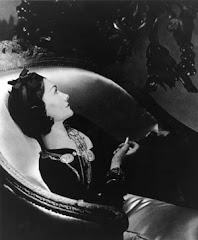The Anya Hindmarch Spring/Summer range has arrived at Net a Porter - see What's New at NET-A-PORTER
This is the Cooper which I pre-ordered at the press preview back in October And this is the Spider clutch
And this is the Spider clutch
Wednesday, 9 January 2008
Yum
Posted by
Linda Grant
at
14:20
3
comments
![]()
![]()
![]()
![]()
Labels: Anya Hindmarch, Bags, Things I like
Politics, briefly

To my American readers: it's not my place to tell you how to vote for your President and that's not my intention. It's merely my incredulity, looking at the array of candidates from both parties taking the stage at New Hampshire that only one was a woman. Never mind who that woman is, what her politics are, who her party is or who she is married to. Why only one woman not even to have a shot at becoming President, but just to have a shot at getting the nomination for becoming President? And let's face it, if Hillary Clinton had not been the former First Lady would she have even been on that stage?
Why in America, the powerhouse of the struggle for women's rights this century, where second wave feminism was born - the country that gave us Betty Friedan, Gloria Steinem, Andrea Dworkin, Kate Millett - has there been no-one before even close to the Presidency? Only one vice presidential candidate.
In Britain we have had a woman prime minister, a woman running for leadership of the Labour Party and women in two of the three top Cabinet jobs (Home Secretary and Foreign Secretary). Angela Merkel in Germany. Helen Clark in New Zealand. Benazir Bhutto running again in Pakistan before the thugs gunned her down. Indira Gandhi in India. Golda Meir in Israel (and Tsipi Livni currently with her eyes on the top job.)
What is it about America that is so afraid of women running for the highest office, or is it that the system requires so much independent wealth or fund-raising that only candidates with the most powerful machines behind them can have a tilt at the White House? There is a deeply conservative side to America which thwarted the Equal Rights Amendment, but there are deeply conservative elements in India, Israel and Pakistan.
I'm a voter on policy, not gender. I never voted for Margaret Thatcher. But the issue is whether the system is open to everyone, not just minorities, but 51 per cent of the population.

Posted by
Linda Grant
at
12:12
25
comments
![]()
![]()
![]()
![]()
Hair and handbags

I have a little piece in the Guardian today about the rocketing price of handbags:
As designer fakes proliferate, handbag makers have aggressively put up their prices. One day last year at the stroke of noon, Chanel put up the prices of all its bags by 20%. The purchase of bags far beyond the income of the average woman has become a frenzy running parallel with the rise of Primark, for there is no fashion for cheap, disposable bags. Instead, there are vastly expensive disposable bags. Twenty-year-olds on £14,000 a year are going into credit card debt to buy £1,000 bags they have seen on the arm of Victoria Beckham or Keira Knightley, who did not, of course, pay for them. These bags will be hopelessly out of date by the end of the season.Read on, there's a bit more.
But there's also a longer, more fascinating piece about the unsung stars of fashion, the hairdressers, and why London is the world epicentre of the profession:
By the dawn of the 60s, however, hairdressing was still essentially perms and waves, Marcels and bouffants, and layers and layers of lacquer - anything, in fact, to disguise the poverty of the cut. Then along came a young man born in 1928 in Shepherd's Bush, the son of a carpet dealer from Thessaloniki and a mother of Russian Jewish descent. After an apprenticeship in Cohen's Beauty and Barber shop in east London and a spell in the Israeli army, Vidal Sassoon became Bessone's assistant before opening his own salon in Bond Street, and changing hairdressing as profoundly as Henry Ford changed carmaking.
"It's impossible to overestimate Sassoon's importance," says Cox. "His impulse was genuinely philosophical and aesthetic, it was a real intellectual step - architecture for the head. Sassoon brought everything back to technique: to cutting, not styling, to form following function. There was no more need for blowdrying or setting or spraying, he produced precision geometric cuts that fitted people's faces. He did the asymmetric bob, Mary Quant's five-point cut, Mia Farrow's urchin look for Rosemary's Baby. He helped make the 60s, for sure, but his influence extends far, far beyond that."
Equally importantly, Sassoon saw that good haircuts demanded properly trained hairdressers. He set up a network of academies that, with their emulators - invariably founded by disciples of the great man - are, in Cox's eyes, the real reason why British hairdressing now rules the world. "This is the Harvard of hair. People come from literally everywhere to train here, from a short course costing a few hundred pounds to a masters course with the international creative director. You have to think of that as like going to an atelier in Paris with John Galliano, except, of course, that there's no such thing."
Posted by
Linda Grant
at
07:43
2
comments
![]()
![]()
![]()
![]()
Labels: Bags, Face body hair, Published work
Thought for the day
Posted by
Linda Grant
at
07:33
12
comments
![]()
![]()
![]()
![]()
Labels: Thought for the day


